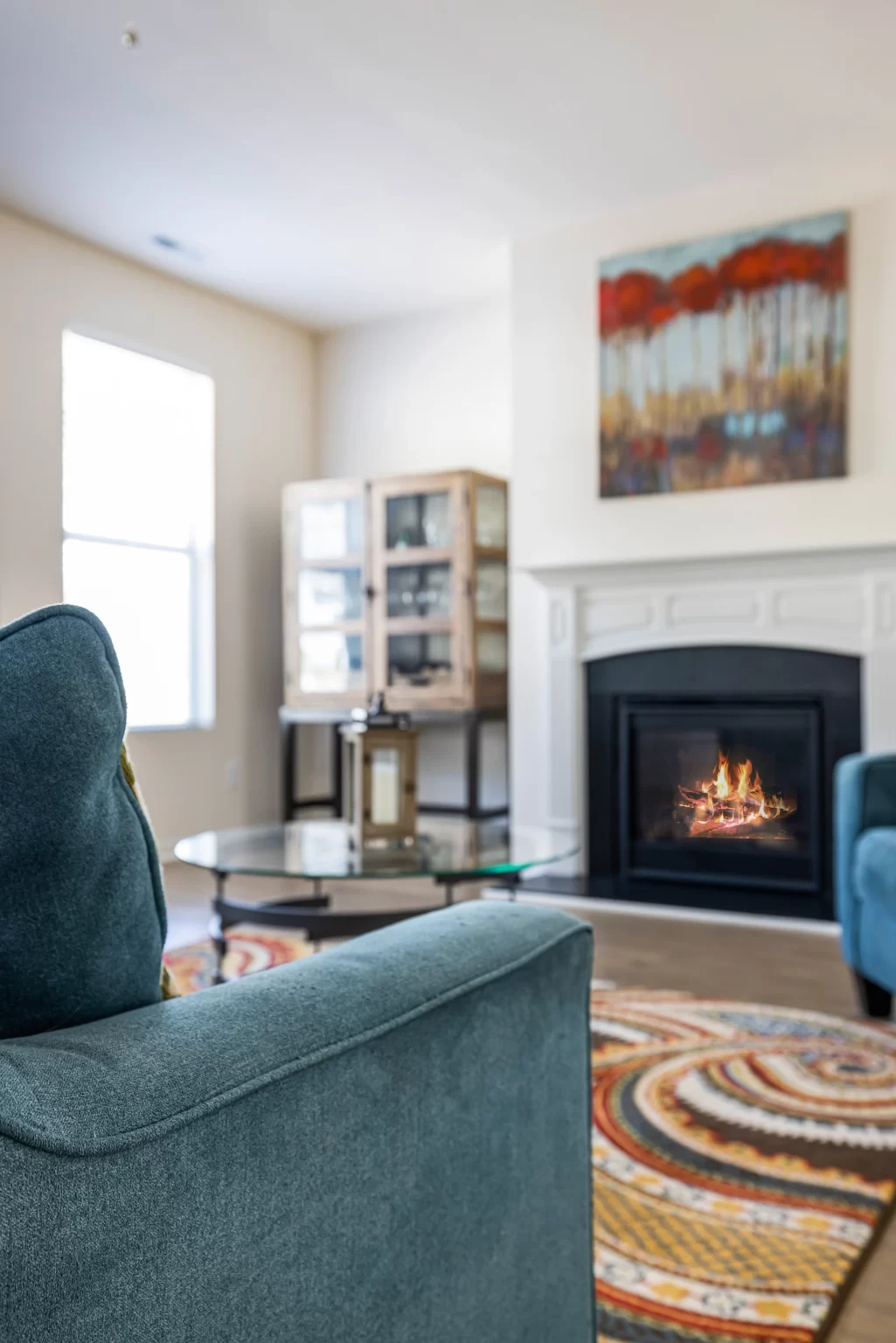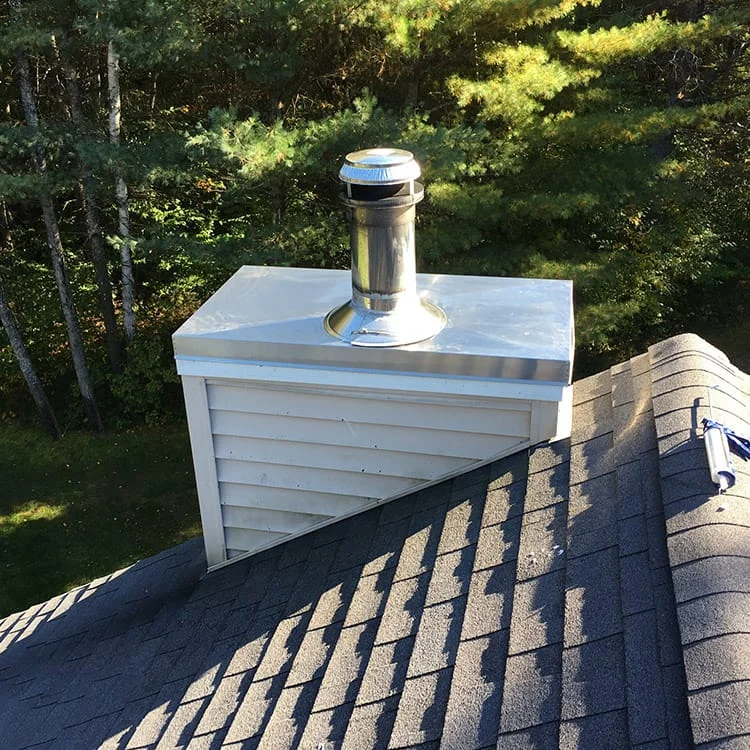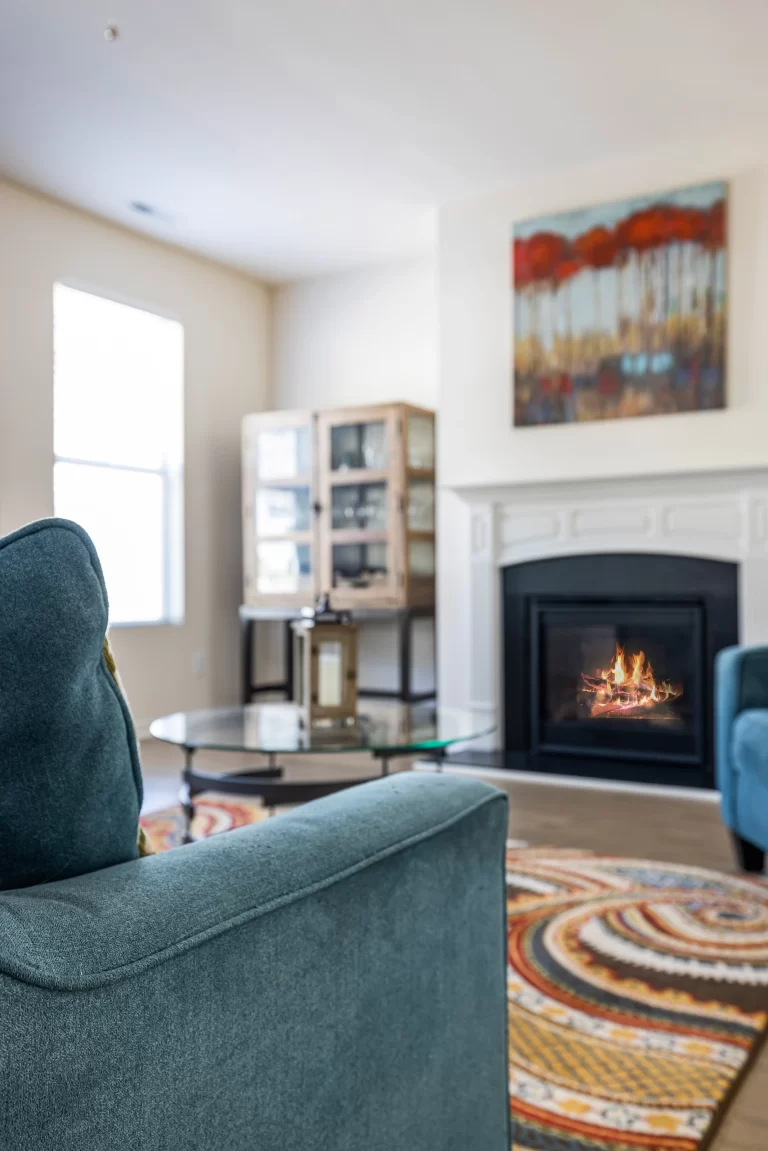Chimney Sweep, Air Duct & Dryer Vent Cleaning Contractor in The San Francisco Bay Area
We are open everyday - 7am to 8pm.
Chimney Inspections San Francisco
Contact a Local Chimney Company to Schedule Your Inspection!

What is Chimney Inspection?
Chimney inspection is a process of examining the interior and exterior components of a fireplace to determine its structural integrity, safety, and efficiency. It is a crucial aspect of chimney maintenance and is usually carried out by professional chimney inspectors or certified chimney sweeps.
During a chimney inspection, the inspector will typically examine the chimney liner, flue, cap, damper, and masonry for any signs of damage or wear and tear. The inspector may use a variety of tools such as cameras, mirrors, and flashlights to inspect the interior of the chimney.
At Chimney Sweep Services, there are three levels of chimney inspections, each with its own scope and requirements. Level 1 inspections are the most basic and are recommended for chimneys that have been regularly maintained and have not experienced any significant changes. Level 2 inspections are more comprehensive and are required when a property is sold or there has been a significant change in the chimney system. Level 3 inspections are the most detailed and are required when a serious hazard is suspected or after a chimney fire.
Why You Need A Chimney Inspection:
Chimney inspections are important part of home maintainence for several reasons. First, they help to ensure that the chimney is safe and structurally sound. Second, they can help identify potential hazards such as creosote buildup, blockages, or cracks in the chimney lining. Third, they can help improve the efficiency of the chimney by identifying any issues that may be preventing proper airflow.
In summary, chimney inspections are an important part of chimney maintenance and can help to ensure the chimney safety, structural integrity, and efficiency of the chimney system. It is recommended to have a chimney inspection at least once a year, especially if the chimney is frequently used.
Importance of Getting Your Chimney Inspected: Recommended Times to Schedule
Chimney inspections should be carried out at specific times to ensure that the chimney system remains safe, efficient, and structurally sound. The National Fire Protection Association (NFPA) recommends that chimneys be inspected at least once a year, especially if the chimney is used frequently.
In addition, there are specific circumstances when chimney inspections should be carried out, such as:
1. Before using the chimney for the first time: A chimney inspection is recommended before using the it for the first time, especially in a new home or after the installation of a new chimney system.

2. After a chimney fire: If a chimney fire has occurred, a chimney inspection is required to assess the extent of the impairment and determine whether any repairs or replacements are needed.
Our chimney inspector are all certified by the Chimney Safety Institute of America

What Level of Inspection do I need?
Level 1: Visual Inspection
A Level 1 inspection is a basic requirement and is recommended to be done every year. During a Level 1 inspection, a technician will examine the accessible parts of the chimney exterior, interior, firebox, and appliance installation to evaluate the chimney's structure and flue's integrity, identify any signs of destruction, and take note of areas of deterioration. It is suggested to opt for a Level 1 inspection if you have not made any changes to your heating appliance or system and do not plan to do so. This level of inspection is also suitable for an annual service visit or for minor masonry repair estimates.
Level 2: Safety Inspection
A Level 2 Inspection is a more detailed and thorough inspection that is highly recommended. It involves a 21 point inspection, including the use of a 360-degree camera to examine the chimney system's interior. With this camera, inspectors can assess the condition of all flue liners, search for cracks or voids, and ensure that the system can safely contain and vent byproducts of combustion. A Level 2 Inspection is required upon the sale or transfer of a property, after an operational malfunction or external event that may have caused harm to the chimney, or when a city inspector requires confirmation of chimney integrity. This inspection is also recommended for homeowners who have made changes to their heating appliance or system or those who have experienced building fires, chimney fires, seismic events, or extreme weather conditions. Unlike Level 1 inspections, Level 2 inspections do not require any invasive or damaging procedures. Inspectors do not need to remove any permanent parts of the home, such as siding or wall coverings, and no demolition equipment is required. To ensure that the inspection is conducted by a qualified professional, property owners should contact a company that specializes in venting, installing, inspecting, repairing, and servicing heat-producing appliances.
Level 3: In-depth Inspection
A Level 3 inspection involves all the steps taken in a Level 1 and Level 2 inspection, and also includes removing specific parts of the chimney or structure as necessary to gain access to concealed areas of the flue. This type of inspection is typically recommended only if there is a suspicion of significant harm. If your chimney requires a Level 3 inspection, our certified technician will explain why it is necessary during your appointment.
Protect Your Home and Family: Professional Chimney Inspections to Detect and Prevent Creosote Buildup
Features of our Chimney Inspection Service
Below are the features that will compel you to not think about any other company than us
Certified Chimney Inspectors:
Our team comprises certified chimney inspector with the skills and expertise to identify any issues with your chimney system.
Affordable Pricing
We believe that everyone should have access to our services, which is why we offer competitive and transparent pricing.
Quality
Our inspection process involves a multipoint method that covers various areas of the chimney. During this process, we thoroughly evaluate and take pictures, while checking for any signs of issues that could compromise the proper functioning and safety of your fireplace inserts.

Serving the San Francisco Bay Area
Chimney sweep services provides high-quality chimney cleaning and maintenance services to homeowners and businesses in the San Francisco Bay Area.
- Alameda
- Albany
- Berkeley
- Dublin
- Emeryville
- Fremont
- Hayward
- Livermore
- Newark
- Oakland
- Piedmont
- Pleasanton
- San Leandro
- Union City
- Antioch
- Brentwood
- Clayton
- Concord
- Danville
- El Cerrito
- Hercules
- Lafayette
- Martinez
- Moraga
- Oakley
- Orinda
- Pinole
- Pittsburg
- Pleasant Hill
- Richmond
- San Pablo
- San Ramon
- Walnut Creek
- Belvedere
- Corte Madera
- Fairfax
- Larkspur
- Mill Valley
- Novato
- Ross
- San Anselmo
- San Rafael
- Sausalito
- Tiburon
- San Francisco
- Atherton
- Belmont
- Brisbane
- Burlingame
- Colma
- Daly City
- East Palo Alto
- Foster City
- Half Moon Bay
- Hillsborough
- Menlo Park
- Millbrae
- Pacifica
- Portola Valley
- Redwood City
- San Bruno
- San Carlos
- San Mateo
- South San Francisco
- Woodside
- Campbell
- Cupertino
- Gilroy
- Los Altos
- Los Altos Hills
- Los Gatos
- Milpitas
- Monte Sereno
- Morgan Hill
- Mountain View
- Palo Alto
- San Jose
- Santa Clara
- Saratoga
- Sunnyvale
- American Canyon
- Calistoga
- Napa
- St. Helena
- Yountville
- Benicia
- Dixon
- Fairfield
- Rio Vista
- Suisun City
- Vacaville
- Vallejo
- Cloverdale
- Cotati
- Healdsburg
- Petaluma
- Rohnert Park
- Santa Rosa
- Sebastopol
- Sonoma
- Windsor
Schedule an Appointment
Regular maintenance of your gas or wood burning fireplace should include an inspection to identify and address minor issues before they turn into major repairs. By investing in an annual inspection by a certified technician from Chimney Sweep Services, you can improve your home’s safety and minimize the risk of chimney fires and carbon monoxide poisoning. Our technicians have received top-notch training on fire codes, clearances, and standards for the construction and upkeep of chimney systems, making them well-equipped to handle any issues they may encounter.
At what times should an inspection be carried out?
If you are uncertain about the safety of your chimney or it has been a while since your last inspection, it is advisable to contact us. Regular inspections can help identify and address minor issues before they escalate into major problems.
According to NFPA 211 guidelines, an annual inspection is recommended if you have been using your chimney regularly and have not made any changes to it.
What Level of Inspection do I need?
The appropriate level of chimney inspection for your home is determined by several factors, such as usage, condition, damage, and changes. The National Fire Protection Association (NFPA), an organization committed to preventing loss of life, injury, and property damage from fire and related hazards, has established guidelines and procedures for chimney inspections and has defined three levels of inspection in their Code 211.
Level 1: Visual Inspection
A Level 1 inspection is a basic requirement and is recommended to be done every year. During a Level 1 inspection, a technician will examine the accessible parts of the chimney exterior, interior, firebox, and appliance installation to evaluate the chimney's structure and flue's integrity, identify any signs of damage, and take note of areas of deterioration. It is suggested to opt for a Level 1 inspection if you have not made any changes to your heating appliance or system and do not plan to do so. This level of inspection is also suitable for an annual service visit or for minor masonry repair estimates.
Level 2: Safety Inspection
A Level 2 Inspection is a more detailed and thorough inspection that is highly recommended. It involves a 21 point inspection, including the use of a 360-degree camera to examine the chimney system's interior. With this camera, inspectors can assess the condition of all flue liners, search for cracks or voids, and ensure that the system can safely contain and vent byproducts of combustion. A Level 2 Inspection is required upon the sale or transfer of a property, after an operational malfunction or external event that may have caused damage to the chimney, or when a city inspector requires confirmation of chimney integrity. This inspection is also recommended for homeowners who have made changes to their heating appliance or system or those who have experienced building fires, chimney fires, seismic events, or extreme weather conditions. Unlike Level 1 inspections, Level 2 inspections do not require any invasive or damaging procedures. Inspectors do not need to remove any permanent parts of the home, such as siding or wall coverings, and no demolition equipment is required. To ensure that the inspection is conducted by a qualified professional, property owners should contact a company that specializes in venting, installing, inspecting, repairing, and servicing heat-producing appliances.
Level 3: In-depth Inspection
A Level 3 inspection involves all the steps taken in a Level 1 and Level 2 inspection, and also includes removing specific parts of the chimney or structure as necessary to gain access to concealed areas of the flue. This type of inspection is typically recommended only if there is a suspicion of significant damage. If your chimney requires a Level 3 inspection, our certified technician will explain why it is necessary during your appointment.
